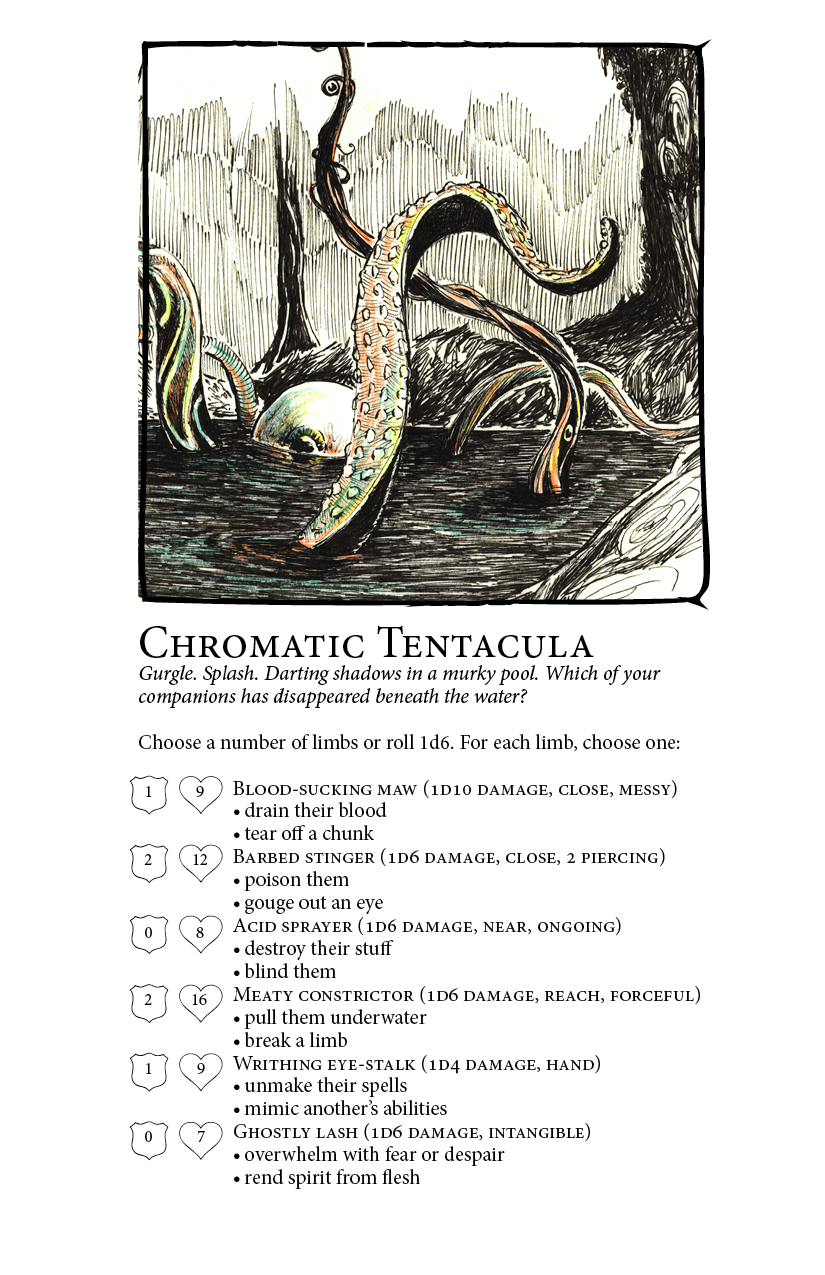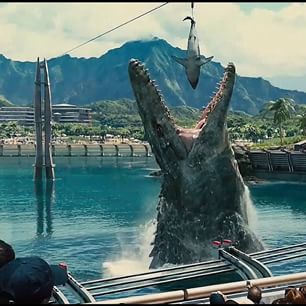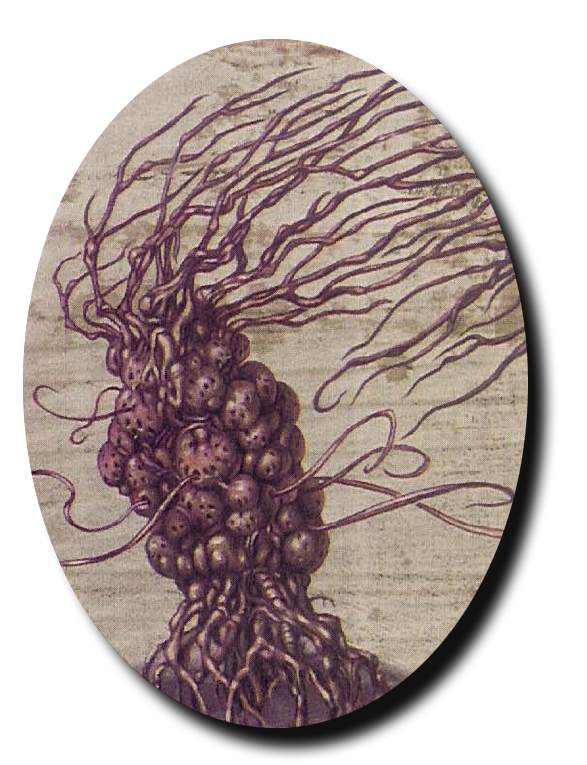Have some strange creatures, using Perilous Wilds’ tables as inspiration:
Tendrilpedes
Often found attached to tree trunks, the legs of these human-sized centipedes twist and curl around anything it can find purchase on, like the tendrils of a vine, slowly sucking the juices out of whatever it has in its grip. If you get too close without noticing them, they will arch back away from the tree and wrap their legs around you! Be careful attacking one latched to a friend or you may damage them as well.
Tags: group
Attack: Bite (1d8, close)
HP/Armor: 6HP, 2 armor
Instinct: To latch onto and drain the juiciest lifeform nearby
Moves:
* Lie in wait, camouflaged
* Bind with a hundred tendril-legs
* Absorb fluids through flesh
Treasure: Looking around reveals the desiccated remains of a deer. Gain 1d6 uses worth of well-preserved rations (total for encounter).
Hollow Owl
You have second watch. As you settle in, you notice movement in the branches of a tree beyond the firelight. You get up and cautiously approach, eyes glued to that spot. As your eyes adjust, you can see the outline of a bone-white owl with utterly black eyes. It seems to be looking right at you… creepy, but harmless. You start to turn away, but realize you can’t move your limbs, or your eyes away from its gaze! Soon, you start to feel your flesh stinging and… dissolving!? You let out a scream through your locked jaws, and as your companions rise to your aid, you try to mumble out “don’t look at it!”
Any living, thinking being caught in its gaze will find it impossible to turn away from it, or to move their limbs. Unless line of sight is broken, the tissue of the victim’s body will slowly dissolve to the bone. In addition to the HP damage, each attack will cause a debility in the following order: CHA, DEX, CON, STR, WIS, INT. However, the touch of a feather from around the eyes of a Hollow Owl will cure one of these debilities instantly.
It’s only bone and feather (and huge, void-like eyes), so many weapons have difficulty finding purchase. It will retreat into the night if it is near death and has the chance.
Tags: solitary, terrifying, stealthy, cautious
Attack: Eyes (b[1d8], close, reach, near, ignores armor)
HP/Armor: 10HP, 4 armor
Special Qualities: Wings, Debilitating gaze
Instinct: Be found by lone wanderers
Moves
* Glide silently
* Perch in likely line of sight
* Hold gaze
Treasure: 2d6 Hollow Owl Feathers, capable of reversing one debility caused by necrotic damage on touch.
Mucosal Mammoth
A humongous pachyderm with too many trunks, sinuous and writhing, exuding a thick slime to coat its pale skin. Very wide feet to distribute its considerable weight and keep it from sinking into marshy ground, and to better paddle while swimming.
It will spray its mucous on attackers, which will harden quickly. It will cause mobility problems, but if characters can DD+STR, they are able to break their joints free, and in fact the remaining encasement gives them +1 armor.
Tags: solitary, large
Attack: Tusks and legs (d10+3, close, reach, forceful)
HP/Armor: 18HP, 3 armor
Special Qualities: Amphibious, hardened mucous shell
Instinct: Protect the herd
Moves
* Spray attackers with hardening mucous
* Knock aside, disarming
* Envelope with tentacular trunks and coat in mucous
Treasure: Unusually smooth, slick ivory tusks (2 weight each), hardening mucous (if you milk a trunk into an airtight vessel)





